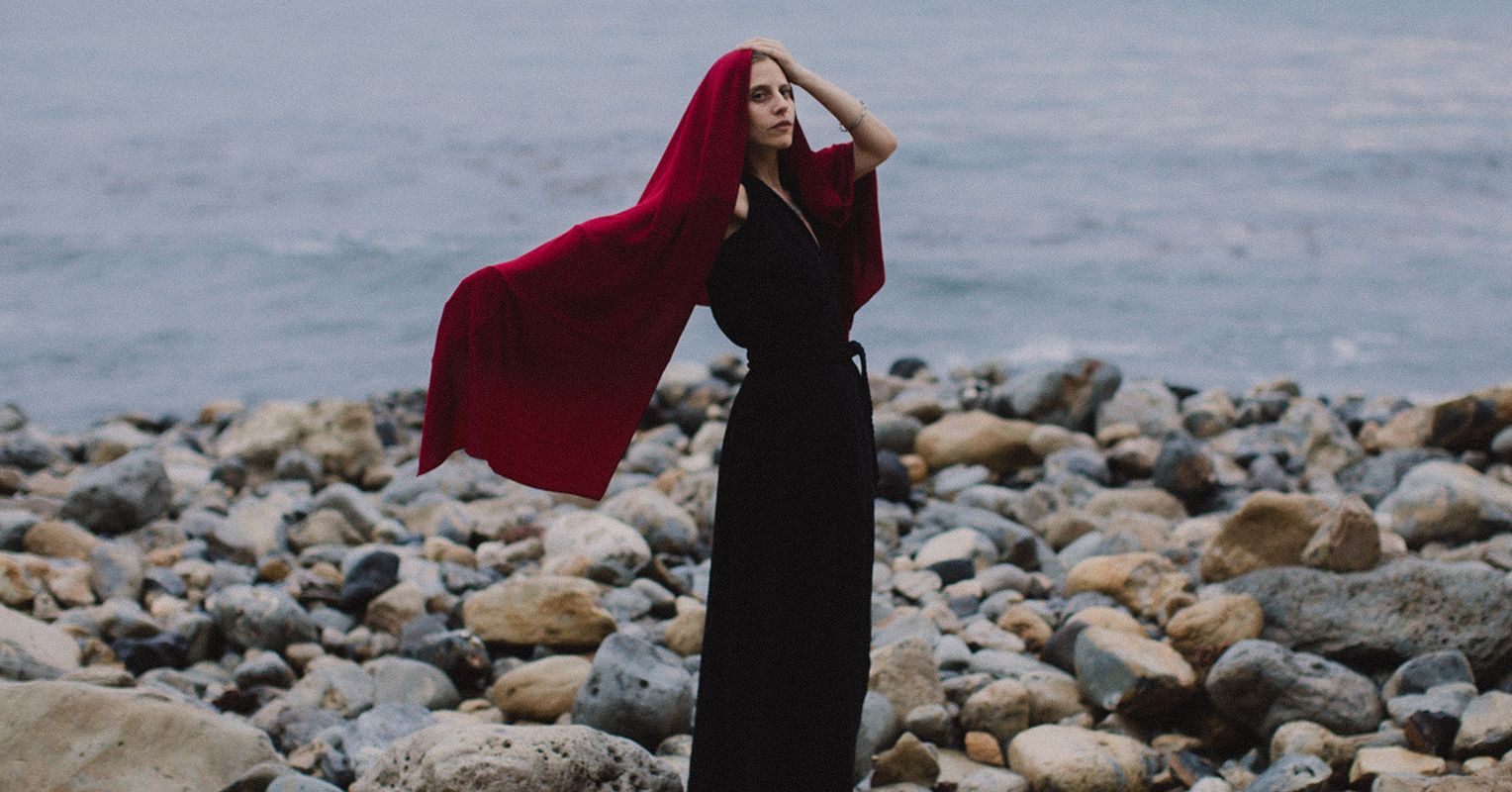970x125
Musician Doe Paoro is approaching music as a healer. With her new album Living Through Collapse, she aims to create a healing experience—both personal and collective. Lyrically, the album explores big questions about ancestry and revolution as well as intimate ones about Paoro’s personal experience. Sonically, it is by turns soothing and energizing. In this interview, Paoro reflects on the ways she brings her experience designing sound baths and guided meditations to the recording and performance of music.
The idea that music has the capacity to heal seems intuitive, but few contemporary musicians make music explicitly as a healing art. What led you to that path?
Living Through Collapse is my fourth album, and it feels markedly different from my first three. Earlier in my career, my songwriting was around themes women are often encouraged (and rewarded) to focus on in pop music—romantic relationships, generally. I remember reading a review of my music that referred to me as a “torch singer” and cringing. That woke me up.
In hindsight, those songs were true in their own way, but they were just a sliver of my lived experience. When I had a miscarriage in 2023, I thought about how I had never heard a song about a miscarriage before, but at least 10 percent of pregnancies end in one. That made me think a lot about which experiences are invisibilized and how art can help change that, which drove my songwriting on “The Language of Past Lives.” With this record, I’ve come into a deeper relationship with music, trusting it can hold my full complexity.
Even before the pandemic, I was beginning to sense that dissonance between what I was writing about and what I was actually living. But lockdown forced the first real pause I’d ever had in my career, and in that stillness, I started reflecting on the endless grind of capitalism, and how it is driving climate catastrophe and is upheld by the structural inequities laid bare during COVID. I started to really grasp how interconnected we all are, and how unwell and unsustainable our dominant culture is.
Parallel to this, I had been apprenticing extensively with Indigenous healers, specifically in the Shipibo tradition in Peru, where singing is central to the healing process. This wisdom lineage has been a powerful pillar and point of orientation in my life.
How did all this experience and reflection change the way you approached the music industry?
In 2018, I experienced a profound burnout after a 21-city tour in 23 days, and realized that the path the conventional music industry had me walking was not working. I was exhausted, sick, broke, and disillusioned. I had witnessed the rot of misogyny and exploitation that so many artists unfortunately encounter in the industry, and I felt deeply devalued. Out of necessity, I turned to sound healing instruments as a way of staying connected to music while tending to myself. I began offering soundbaths, which grew quickly, and I noticed how nourishing this way of sharing music was—both for me and for others.
Soon after, I was invited to share my music in plant medicine ceremonies, and there I came to understand the therapeutic power of song on a much deeper level.
I’ve put everything I’ve collected from these experiences into my new record. Structures are breaking down all around us. For me, the most meaningful use of my platform and music right now is to create space for grieving, for healing, and for a call to action towards our responsibility to one another and to the greater web of life in this time of unraveling.
You practice music as a healing art in different modes. How does a recorded album, like Living Through Collapse, become a vehicle for healing? And how does that compare to the ritual of live performance?
Music offers the experience of being deeply impacted without pain—that receptivity is something that is very unique to the medium of music. This is why music has the potential to be such a potent carrier for inner and outer revolution. Our hearts open to messages that arrive via songs in ways that they may not in other contexts. These songs are seeded with my highest healing intentions. Most people who listen to the songs won’t know the backstory, but I believe they will feel that energy because that’s how transmission works.
People can listen to these songs intimately, in their own space, and receive the expression that we captured in that moment. This is very different from the ritual of life performance, which is a communal dialogue, one that we as musicians and everyone listening create and inspire together, and which is particular to the moment in time and the land that we are on. Recorded music exists out of time-space; ritual live music is shaped by context.
Every live performance can never be repeated and is a total unknown; we enter the space together, understanding the sanctity of that. Recorded music offers us the comfort of returning to something that remains unchanged.
In the writing and recording process, in what ways are you mindful of healing practices?
I see the creative process as a birth process, and I try to take really good care of myself while writing and recording because my voice is an instrument, and I want to transmit the most peaceful vibration possible on these recordings, which is only possible if I am peaceful towards myself. Good sleep, a lot of time in nature, and spending time with my community are all parts of my practice.



